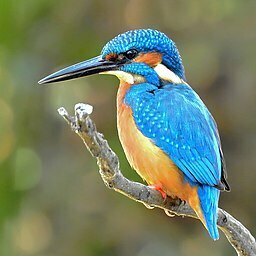Listening to the Earth
Wed, Sep 13
"Be praised, my Lord, through all your creatures,
especially through my lord Brother Sun,
who brings the day; and you give light through him.
And he is beautiful and radiant in all his splendor!
Of you, Most High, he bears the likeness."
— Saint Francis of Assisi, Canticle of the Sun
In Arne Naess’s “The Shallow and the Deep,” we read about how the deep ecology movement integrates environmental stewardship with societal justice and care for the poor. Naess is hardly the first figure to make this connection. Ideas of hermeticism, from St. Francis to Thoreau, involve a withdrawal from society and an embrace of nature and poverty. In the Gospels, Jesus contrasts the beauty of nature with the folly of worrying about material goods: “Why do you worry about clothing? Consider the lilies of the field, how they grow: they neither toil nor spin; and yet I say to you that even Solomon in all his glory was not arrayed like one of these” (Matthew 6:28-29). Modern “return to nature” or “back to the land” movements, too, often entail a rejection of society and an embrace of a simpler life. The beauty of the world is contrasted with the complexity and hardship of material toil and material gain -- as in the Pixies song, "Caribou," with its jagged refrain of "Repent. Repent. Repent."
On the other hand, indigenous conceptions of the natural world see it as continuous with human existence. Bears marry people, crows play tricks, boys become birds and vice versa. When St. Francis or Gerard Manley Hopkins experience holy communion with "Brother Sun" or a kingfisher, it is because they are experiencing the transcendental unity of God or Christ, but in the folk tales we read from the Pacific Northwest and elsewhere, animals and humans are the same kind of being, and even talk the same. This deep anthropomorphism is perhaps less a kind of projection than a kind of translation, comprising both a reaching toward and an opening into acting and being acted on by non-human beings.
We can see this relationship in Nukariik's songs, and even closer to home as when birders identify a species birdsong using words. For example, an American Robin says cheerily, cheer up, cheerily, a Hermit Thrush sings oh holy holy, and a Carolina Wren sings teakettle teakettle teakettle. Other times, the sound the bird makes becomes a word in our language: think of chickadees, jays, or cuckoos.
How do these views of nature differ? How are they they same? How do they conceptualize the relationships between nature, humanity, and society? How do language and naming shape our relationships with the natural world? Conversely, how does our relationship with the non-human world shape our language?And what might these views say to us now, in the light of our environmental crisis?

Goals
- Reflect on the ways in which our language emerges from and is embedded in the world around us
- Reflect on the theology of creation expressed in St. Francis’s famous poem
- Consider what theology and ecology say to each other
- Compare Catholic and indigenous representations of the relationship between humans and non-human beings
Listen to This
- Nukariik, Live at the Music Gallery
Read This:
- St. Francis, "Canticle of the Sun"
- Gerard Manley Hopkins, "As Kingfishers Catch Fire"
- Steven Feld, "The Boy Who Became a Muni Bird"
- St. Bonaventure, excerpts from "The Little Flowers of Saint Francis"
- "The Meetings of the Wild Animals" and "The Bear and His Indian Wife" from Native American Myths and Legends
- "The Elk Spirit of Lost Lake" and "How Beaver Stole the Fire" from Indian Legends of the Pacific Northwest